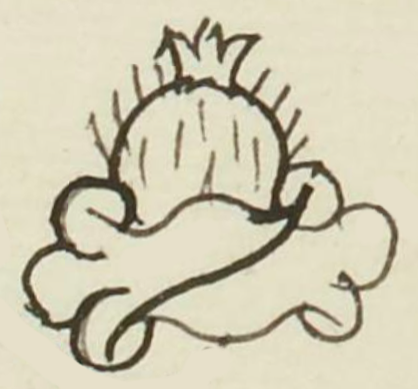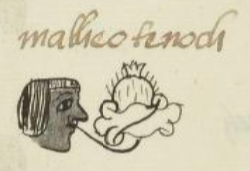Tenoch (MH898r)
This black-line drawing of the compound glyph for the personal name Tenoch (short for tenochtli, the nopal or prickly pear cactus) is attested here as a man’s name. The glyph shows a horizontal stone (which serves as phonetic indicator) with a couple of the usual hallmarks–a diagonal line across the middle and curling ends. Above the stone is a fruit of the (nochtli) prickly pear cactus. This is the usual compound glyph for the name of Tenochtitlan, the capital city, but also the glyph for the name of the legendary founder and ruler, Tenoch.
Stephanie Wood
See other example of the Tenoch hieroglyph, below. Also, the glyph for the name Teonolxochitl is quite similar. The reason for this requires further research.
Stephanie Wood
matheo tenoch
Mateo Tenoch
Stephanie Wood
1560
Jeff Haskett-Wood
nopales, tunas, piedras, nombres famosos, nombres de hombres

te(tl), stone, https://nahuatl.wired-humanities.org/content/tetl
noch(tli), prickly cactus fruit, https://nahuatl.wired-humanities.org/content/nochtli
Tenoch (nombre del fundador de Tenochtitlan)
Stephanie Wood
Matrícula de Huexotzinco, folio 898r, World Digital Library, https://www.loc.gov/resource/gdcwdl.wdl_15282/?sp=868&st=image.
This manuscript is hosted by the Library of Congress and the World Digital Library; used here with the Creative Commons, “Attribution-NonCommercial-ShareAlike 3.0 License” (CC-BY-NC-SAq 3.0).








